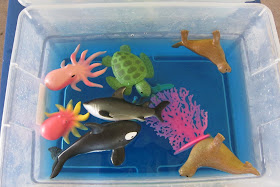Attachment is the emotional connection children form with their parents or primary caregiver. This is different from bonding, a term we use often when referring to connecting with an infant.
Bonding is the feelings of a parent or caregiver toward a child. Both of these are important but this post is focused on attachment.
You want your baby to be attached to you, you want them to come to you for help, hugs and comfort. At the same time you want them to be comfortable with others such as babysitters, friends and family. You want them to be ok on their own and form independence as well. You want them to feel securely attached but not over-dependent on you. Building healthy secure attachments early on will have long-lasting positive effects on your child.
"A key concept in [the] attachment theory is that
a child's dependence ultimately leads to independence. In other words, it's only when children feel they can count on their parents to be available, and when they consistently find the world to be a safe and approachable place, that they develop the confidence to fully explore and play on their own." -early moments matter
How do you help your child develop secure healthy attachments?
The best thing to do is to respond to their cues. Cues are the body language and signals your baby/child uses to communicate. The response of the parent to a child's cues will determine whether the child develops insecure or secure attachments. Ignoring, rejecting or inconsistently reacting to them will have lasting damaging effects. Reacting sensitively, reassuringly and consistently will have positive outcomes. Even when a child doesn't understand the words you are using they can sense your tone. Reassure your child that you get what they are feeling. You understand that certain things are hard for young kids, you've been there before. Keep your tone in check to keep their attachment to you secure.
Here are the long-term benefits of creating a secure attachment early on:
Your child will
- Be more motivated to learn
- Do better in school
- Have more confidence and sense of self-worth
- Develop good problem-solving skills
- Form healthier relationships
- Become more self-reliant
- Cope with stress and manage frustration well

















.jpg)






























